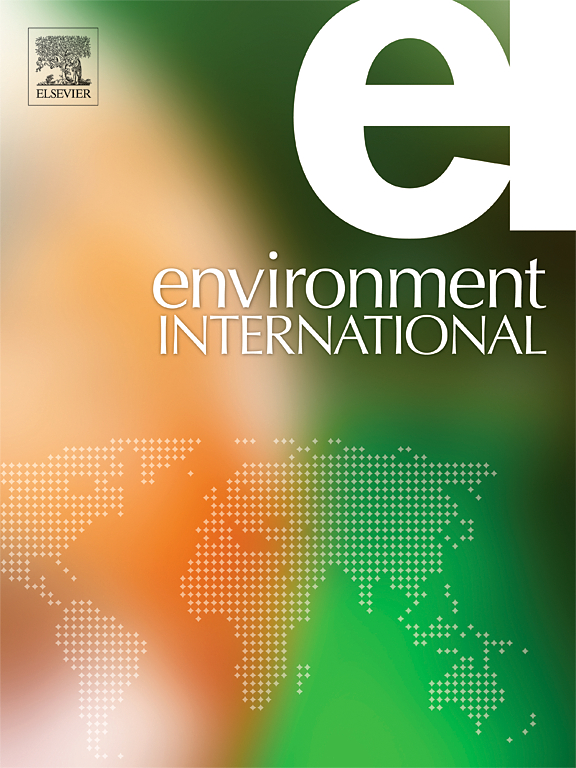Oxidative potential of urban PM2.5 in relation to chemical composition: Importance of fossil driven sources
IF 10.3
1区 环境科学与生态学
Q1 ENVIRONMENTAL SCIENCES
引用次数: 0
Abstract
For a comprehensive evaluation of the key factors determining the oxidative potential (OP) of PM2.5, 75 samples of PM2.5 were collected in urban Seoul, South Korea, during 2019–2021, and dithiothreitol consumption (DTTv) was measured using a DTT assay, coupled with an analysis of major constituents and stable isotope ratios of PM2.5. For the entire sample set, the mean DTTv value was 0.58 ± 0.48 nmol m−3 min−1 for PM2.5 of 29.1 ± 12.2. DTTv exhibited a general dependence on of PM2.5 concentrations and major constituents, including NO4+, SO42-, NH4+, and organic carbon (OC). Specifically, NO3– and NH4+ demonstrated the most robust correlation with DTTv during the cold season, whereas only elemental carbon (EC) showed a significant correlation with DTTv in the warm season. The δ13C of total carbon (TC) and δ15N of total nitrogen (TN) displayed an inverse correlation concerning DTT activities, suggesting the significant contribution from solid fossil fuels and biomass burning to the oxidative potential of PM2.5, particularly during the cold season when PM2.5 was notably high. In contrast, vehicle emissions were found to influence DTTv even at low PM2.5 levels in warm seasons. This study provides insights into the intricate dynamics influencing the oxidative potential of PM2.5.


求助全文
约1分钟内获得全文
求助全文
来源期刊

Environment International
环境科学-环境科学
CiteScore
21.90
自引率
3.40%
发文量
734
审稿时长
2.8 months
期刊介绍:
Environmental Health publishes manuscripts focusing on critical aspects of environmental and occupational medicine, including studies in toxicology and epidemiology, to illuminate the human health implications of exposure to environmental hazards. The journal adopts an open-access model and practices open peer review.
It caters to scientists and practitioners across all environmental science domains, directly or indirectly impacting human health and well-being. With a commitment to enhancing the prevention of environmentally-related health risks, Environmental Health serves as a public health journal for the community and scientists engaged in matters of public health significance concerning the environment.
 求助内容:
求助内容: 应助结果提醒方式:
应助结果提醒方式:


